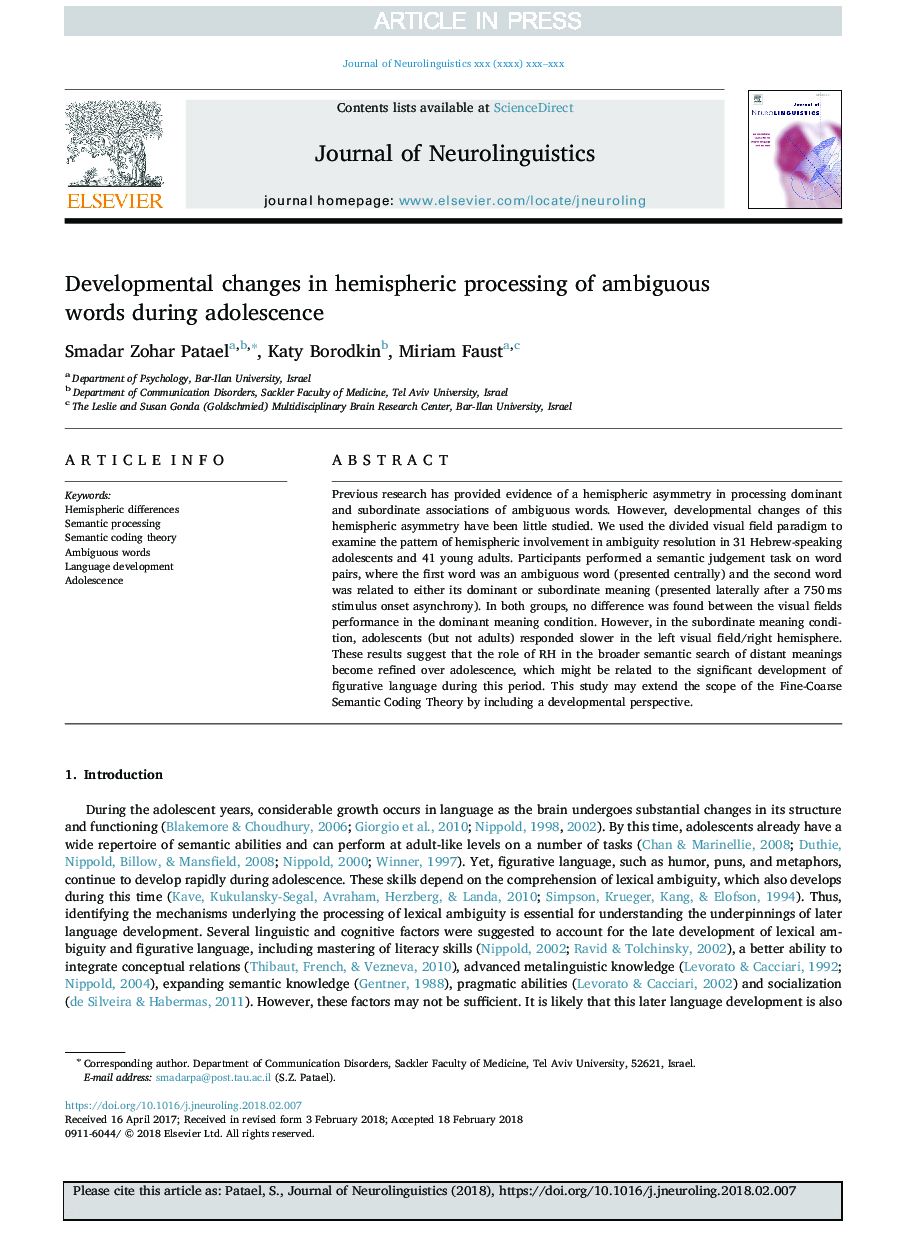| Article ID | Journal | Published Year | Pages | File Type |
|---|---|---|---|---|
| 7268727 | Journal of Neurolinguistics | 2018 | 9 Pages |
Abstract
Previous research has provided evidence of a hemispheric asymmetry in processing dominant and subordinate associations of ambiguous words. However, developmental changes of this hemispheric asymmetry have been little studied. We used the divided visual field paradigm to examine the pattern of hemispheric involvement in ambiguity resolution in 31 Hebrew-speaking adolescents and 41 young adults. Participants performed a semantic judgement task on word pairs, where the first word was an ambiguous word (presented centrally) and the second word was related to either its dominant or subordinate meaning (presented laterally after a 750â¯ms stimulus onset asynchrony). In both groups, no difference was found between the visual fields performance in the dominant meaning condition. However, in the subordinate meaning condition, adolescents (but not adults) responded slower in the left visual field/right hemisphere. These results suggest that the role of RH in the broader semantic search of distant meanings become refined over adolescence, which might be related to the significant development of figurative language during this period. This study may extend the scope of the Fine-Coarse Semantic Coding Theory by including a developmental perspective.
Related Topics
Life Sciences
Neuroscience
Cognitive Neuroscience
Authors
Smadar Zohar Patael, Katy Borodkin, Miriam Faust,
